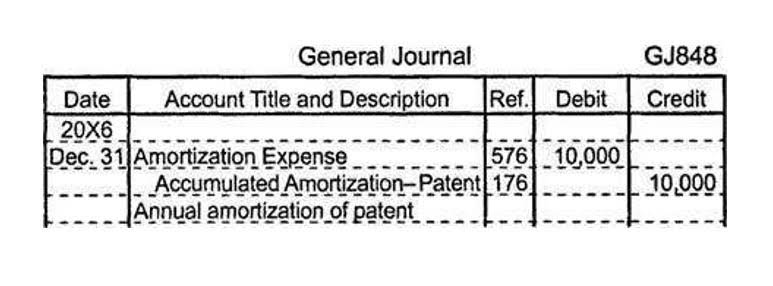
If you’re in the market for an application that can easily track assets and record amortization, be sure to check out our accounting software reviews. Intangible assets may be recorded if they are acquired, but not if they are developed in-house. If acquired, an expenditure can only be recorded as an asset if it is expected to have a useful life of at least one year.

Goodwill is a premium paid over the fair value of assets during the purchase of a company. Hence, it is tagged to a company or business and cannot be sold or purchased independently. In contrast, other intangible assets like licenses, patents, etc., can be sold and purchased separately. Internally developed intangible assets do not appear as such on a company’s balance sheet.
Intangible Assets in the Balance Sheet
The firm’s accounting department posts a $10,000 amortization expense each year for 30 years. As mentioned above, Amortization is typically intangible assets do not include charged as an expense. However, there are times when you use the economic returns generated from such an asset to produce other assets.
A 2001 ruling decreed that goodwill could not be amortized but must be evaluated annually to determine impairment loss; this annual valuation process was expensive as well as time-consuming. Amortization is the same concept as depreciation, but it’s only used for intangibles. Amortization spreads out the cost of the asset each year as it is expensed on the income statement. Intangible assets are often intellectual assets, and as a result, it’s difficult to assign a value to them because of the uncertainty of future benefits. Tangible assets, on the other hand, have a physical shape, which means they can be handled and grasped.
Intellectual Property
In such a case, the Amortization cost forms part of the cost of the other asset. As discussed under Intangible Assets Accounting, you first need to recognize if an asset is intangible. Subsequently, you either charge the intangible as an expense or report it as an intangible asset on the asset side of the balance sheet.

Therefore, some companies have extremely valuable assets that may not even be recorded in their asset accounts. Goodwill cannot exist independently of the business, nor can it be sold, purchased, or transferred separately. A company’s record of innovation and research and development and the experience of its management team are often included, too. As a result, goodwill has an indefinite useful life, unlike most intangible assets. In accounting, goodwill is an intangible value attached to a company resulting mainly from the company’s management skill or know-how and a favorable reputation with customers. A company’s value may be greater than the total of the fair market value of its tangible and identifiable intangible assets.
Identifiable and Unidentifiable Intangible Assets
These assets are generally considered long-term whose value increases over time. Even though it doesn’t have a physical form, an intangible asset can be very valuable for the owner and critical to their long-term success (or failure). If you purchase an intangible asset from another company, the asset’s recorded value will be the cost of the purchase. It’s important that you record the asset properly before you calculate and record the amortization expense for any intangible asset. For tax purposes, the cost basis of an intangible asset is amortized over a specific number of years, regardless of the actual useful life of the asset (as most intangibles don’t have a set useful life). The Internal Revenue Service (IRS) allows intangibles to be amortized over a 15-year period if it’s one of the ones included in Section 197.

When intangible assets do have an identifiable value and lifespan, they appear on a company’s balance sheet as long-term assets valued according to their purchase prices and amortization schedules. Tangible assets are expensed using depreciation, and intangible assets are expensed through amortization. Depreciation generally includes a salvage value for the physical asset—the value that the asset can be sold for at the end of its useful life. Whereas, intangible assets are assets that do not hold any physical substance. As mentioned above, you need to record these items as intangible assets on your balance sheet. Provided such assets meet both the intangible assets definition and the recognition criteria.
Amortization of intangibles (or amortization for short) appears on a company’s profit and loss statement under the expenses category. This figure is also recorded on corporate balance sheets under the non-current assets section. Assets are used by businesses to generate revenue and produce income. Over a period of time, the costs related to the assets are moved into an expense account as the useful life of the asset dwindles. By expensing the cost of the asset over a period of time, the company is complying with GAAP, which requires the matching of revenue with the expense incurred to generate the revenue.
Tremor International Reports Results for the Three and Nine Months … – StreetInsider.com
Tremor International Reports Results for the Three and Nine Months ….
Posted: Wed, 22 Nov 2023 11:31:30 GMT [source]
Per generally accepted accounting principles (GAAP), businesses amortize intangibles over time to help tie the cost of an asset to the revenues it generates in the same accounting period. You must carry the intangible asset at Cost once you have recognized it as intangible. Now, you can choose between two methods to measure the intangible assets post the acquisition. Accordingly, the useful life assessment changes for such intangible assets.
